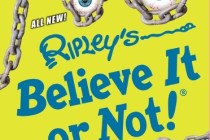Kids can read about Sterling North’s pet raccoon in new book
When you’re sad, you reach for your teddy bear.
When you’re unhappy, you look for a friend to talk to or you spend time with family, which comforts you and makes you feel better. But when author Sterling North suffered loss, his family was scattered and so, as you’ll see in “Sterling North and the Story of Rascal” by Sheila Terman Cohen, he reached for something very unusual…
Growing up in a small Wisconsin town in 1918, 11-year-old Sterling North had pets: a dog and a bird, a muskrat and a woodchuck. And that year — not too long after his beloved mother died — Sterling had a baby raccoon.
With his mother gone, his much-older sisters away, his brother fighting in World War I, and his father at work, Sterling “was left to fend for himself” and spent much of his time outdoors near the town of Edgerton. He was with a friend one spring day, in fact, when Sterling’s dog startled a mother raccoon, who hurriedly gathered her babies and moved away to safety.
But she forgot one kit and Sterling, knowing that the baby would die without care, fished it out of its den and took it home.
“At first,” says Cohen, “Rascal lived in the family barn,” but he eventually ended up sleeping in the North’s house, sometimes on Sterling ’s bed. Like most raccoons, he was curious and mischievous but Sterling loved his pet and he patiently taught Rascal many things. For an entire summer, Rascal went nearly everywhere with Sterling and, that fall, he went to school, too — which proved to be a very bad thing.
Years after letting Rascal go, Sterling became an adult, married and moved to Chicago, then Michigan and then took his family to New Jersey, where he became a well-known writer of books, magazine and newspaper columns, and radio programs. Still, he never forgot his love of nature, his boyhood or the pet that gave him comfort.
In 1963, he sat down to write about them.
Like many kids over the last 50-some years, I loved reading “Rascal.” Like them, I wanted my own raccoon. However, like me, your child will have to settle for “Sterling North and the Story of Rascal” — but before he gets to the good part the tale, he’ll have to work past a lot of filler.
While it’s interesting to know North’s parental lineage, I don’t think that’s what will drive children to read this book, but Cohen adds that, plus bits about automobiles, Spanish Flu, Thomas Edison, telephone operators and more. There are many photos here, too, but most of them are representative or “similar to” what North “might” have used, which made me feel rather cheated.
But will your child care? You know that answer; I can only tell you that this is an interesting supplement to the classic tale and may enhance its reading. Just be aware of that, if “Sterling North and the Story of Rascal” is a book your 8- to 12-year-old reaches for.
View publishes Terri Schlichenmeyer’s reviews of books for children weekly.
About the Book
"Sterling North and the Story of Rascal" by Sheila Terman Cohen
c. 2015, Wisconsin Historical Society Press, $12.95/higher in Canada, 119 pages























